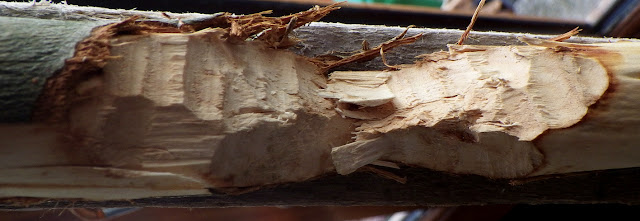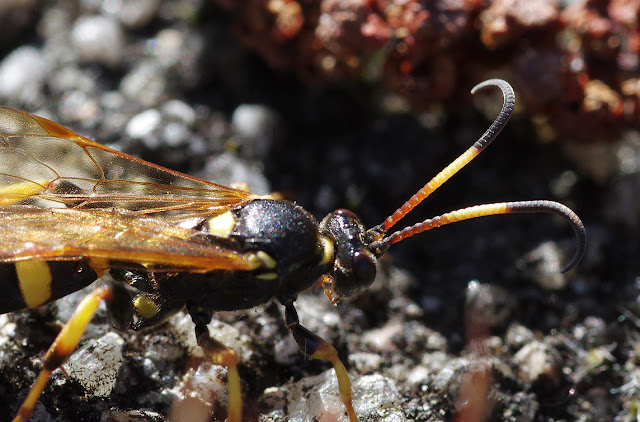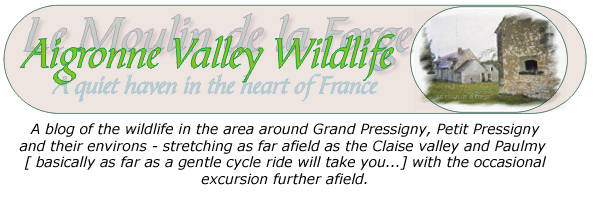I have been playing "catch up" in the meadow and along the millstream...
I haven't been able to get onto the meadow over-Winter for three years...
so I have been felling timber that needs to be felled as quickly as possible....
with the intention of tidying up afterwards...
the only tidying that I have been doing has been to create a safe environment for me to work...
or to clear the paths.
Some of the felling has involved the "nursery area" that is outside our bedroom window....
three of the young willows were too deeply rooted when Stuart and I were lifting them for replanting elsewhere....
and that, coupled with the fact that the ground had become very unstable by the time we reached them....
and we had no real purchase in the sticky goo... all that meant that they were left...
and, in reality, neglected for a further two years.
By that point they were too large to try and move, so I cut them off as waist high pollards...
this is the height that some biomass and basket making willows are kept at...
which means no back-breaking bending....
the oldest known pollard, some four thousand years old....
and found in the river bed of the Derwent in Yorkshire, is this same height...
so early man thought that too!
And therefore I began to harvest them in a three year cycle.... to create "bushes"...
which has been interrupted by three bad winters...
so I had a mix of four, five and six year old wood...
and I decided to cut them all and start again, because we only want bushes there...
the trees that they had become were blocking our view...
this resulted in a lot of timber
which I cleared to the side as I went, the largest one of which had its top in the millstream [
bief]....
the butt end on the bank where I could get at it easily.
We couldn't help but notice....
as we looked out of the bedroom and kitchen windows at the newly cleared area....
that two of the willows were missing bark from the base...
and I thought to blame it on the
ragondins [coypu]...
 |
| Two out of the three have had the bark stripped from the base... fortunately NOT all the way round |
About two weeks ago, however, we noticed that someone had stripped bark from the branches that I had left lying in the bief...
immediate presumption... coypu!
 |
| Lovely white wood under that willow bark! |
Then we saw this....
 |
| The focus isn't too sharp... I'll add a better one at the end |
...now, according to the books ragondin do eat bark, but apparently reluctantly... as Pauline has discovered, they "only eat bark when they are desperate" as they prefer grass... visible and growing all this winter... and the fleshy roots of the teasels, thistles and similar plants... which we also have in plenty, despite their efforts and mine, in the orchard... as well as elsewhere.
But they stop at bark... they don't eat young wood!! Not like that, surely....
only a beaver leaves traces like that!!
Now, we've seen beaver activity... right in the heart of town, near the railway station... and they are spreading out quite rapidly from their point of reintroduction on the Loir in both 1975 and again 1995.... 13 animals in both cases... but up the Aigronne??
We needed proof before reporting it on Faune Touraine, the local focus for Citizen Science data collection...on an ever increasing diversity of wildlife.
So, time to deploy the "pieges photographiques"...trail cameras to Anglophones!
We had a stealth beaver... bark was going missing... but no triggers...hmmm!
The ducks were triggering the traps, as were the coypu as they swam past...
and the rats using the branches as a highway to avoid having to swim too much!
But, not what was bark stripping... by which time we had three cameras watching a twenty-five square metre section of stream...
so I contacted Martin of
Wildlife & Countryside Services, the supplier of two of our photographic traps and our Wildlife Accoustics bat detector...
and a very useful source of advice....
who came right back with a probably cause...
temperature...
beaver swim with only the nose and a flat area between that and their ears...
out of the water...
so as it emerges to feed, the temperature difference between animal and water...
is too little to trigger the PIR on the camera... try different positions!!
AND, bingo....
 |
| Yes, a beaver.... right outside the kitchen window... |
 |
| ... we were probably still up!! And it is thanks to Simon that we've got these stills to insert... |
.... yes, a positive sighting of beaver!!
These are
European Beaver [
Castor fiber galliae]
Castor d'Europe....
and are genuine French ones, not Polish as I had read...
the reintroduction was from a remnant population on the Rhône.
Pauline immediately reported the wood chewing evidence on Faune Touraine...
back dated, which is quite normal....
whilst I tried to get a still from the video... nothing I had would play ball... or were programs I haven't had the chance to play with [
learn]... but, again help was on hand in the form of Simon of
LVTT and
Days on the Claise who, after some Dropboxery and his preferred program... lifted out a couple of stills that Pauline reported the sighting with on Saturday night.... it would have to be the
First of April!!
But we've supplied the photographic evidence along with the record....
so hopefully no "
no you didn't" emails from the moderators on Faune Touraine...
probably thinking "
Mon Dieu... it's those damned Anglais again!"
Pauline also had emailed Yohann the River Technician....who Susan
posted about in December [an interesting read about a difficult job in itself].... during the afternoon to let him know... he came back with the nearest to us he'd seen activity was near Gatault... only about 2 kilometres from us downstream... so, as they have a multi-kilometre territory when confined to a stream, it/they have probably been going up and down quite regularly... or are doing so now? Looking at the grey wood on the largest stump, they've been here for at least three years it takes around that long to colour... and I hadn't noticed any damage before that....
 |
| The bright bits just as the shadow starts are teeth marks from the lower jaw. |
BUT we may have also blown the myth that ragondin only eat bark when they are desperate... we got three videos where one particularly large animal stripped and ate the bark.... the tail said coypu, not beaver... unless it was so perfectly "
side on" that it appeared the same as a coypu's... but my guess is that coypu will eat nice young bark if it is "
presented" to them.
This stretch is perfect for European beavers as... because they burrow... there are plenty of old coypu homes ready to occupy.
It is calm and quiet, assorted different depths of water, too, so an
underwater entrance would be easily maintained... even in the driest of
summers.
We will keep watching... and feeding... our beaver(s) and add more information as and when!!
Here
is the actual video of the beaver... uploaded via Blogger, so invisible
on Safari and on Apple machines even if you are using Firefox, sorry....
And a much better picture of the tooth marks on the branch...
 |
Yes, it does look dry... I rescued it before the branch broke at that point completely...
it is now strapped to a length of roofing lath as it has almost broken at the thinnest point. |
Now... if that isn't natural news for us, I don't know what is!
We keep getting surprised!!
























